- The Importance of Pruning Hazelnut Trees
- Promotes Air Circulation
- Controls Tree Size
- Shapes the Tree
- Stimulates Fruit Production
- Rejuvenates the Tree
- Improves Nut Quality
- Pruning Hazelnut Trees: Key Benefits
- When to Prune Hazelnut Trees
- Pruning in Late Winter or Early Spring
- Avoid Pruning during Late Summer or Fall
- Observing Individual Tree’s Growth
- Tools and Techniques for Pruning Hazelnut Trees
- Tools for Pruning Hazelnut Trees
- Pruning Techniques for Hazelnut Trees
- Step-by-Step Guide to Pruning Hazelnut Trees
- 1. Choose the right time for pruning
- 2. Gather the necessary tools
- 3. Remove any dead or diseased branches
- 4. Thin out crowded branches
- 5. Shape the tree
- 6. Prune for fruit production
- 7. Clean up and dispose of pruned branches
- 8. Monitor and maintain the tree
- 9. Consider professional assistance
- 10. Practice regular pruning
- Common Mistakes to Avoid When Pruning Hazelnut Trees
- Frequently Asked Questions about Pruning Hazelnut Trees
- 1. When is the best time to prune hazelnut trees?
- 2. How often should hazelnut trees be pruned?
- 3. What tools do I need to prune hazelnut trees?
- 4. How much should I prune my hazelnut trees?
- 5. Can I prune hazelnut trees in summer?
- 6. How should I dispose of pruned branches?
- Question-answer:
- When is the best time to prune hazelnut trees?
- How much should I prune off the hazelnut tree?
- What tools should I use for pruning hazelnut trees?
- How often should hazelnut trees be pruned?
- Can I prune hazelnut trees during the summer?
- Video: How To Kill A Tree Without Anyone Knowing – How To Kill A Tree – Journey To Sustainability

Growing hazelnut trees can be a rewarding experience, especially when they produce an abundance of delicious fruits. However, to ensure a bountiful harvest, it’s important to shape and prune your hazelnut trees properly. Pruning plays a vital role in maintaining the health and productivity of the tree, as well as controlling its size and shape.
One of the main goals of pruning hazelnut trees is to encourage the development of a strong framework of branches that can support the weight of the fruit. By removing any weak or damaged branches, you ensure that the tree’s energy is directed towards the growth of healthy branches that will bear abundant fruit in the future.
When pruning hazelnut trees, it’s important to follow a few key principles. Firstly, make sure to prune during the dormant season, typically in late winter or early spring, before the tree starts to actively grow. This allows the tree to heal quickly and minimizes the risk of disease. Secondly, always use sharp, clean tools to make precise cuts, as ragged cuts can be more prone to infection. Lastly, don’t be afraid to make bold pruning cuts to remove any excessive growth, as this will help maintain the overall shape and size of the tree.
One important technique in pruning hazelnut trees is called the central leader system. This involves selecting a central leader branch and removing any competing branches that could potentially dominate the tree’s growth. This technique helps establish a strong and balanced tree structure.
In conclusion, pruning hazelnut trees is crucial for their overall health and productivity. By following the proper techniques, such as the central leader system, you can shape the tree for abundant fruit production. So, roll up your sleeves and get ready to prune your hazelnut trees – you’ll soon be rewarded with a bountiful harvest of tasty nuts!
The Importance of Pruning Hazelnut Trees
Pruning hazelnut trees is an essential practice for maintaining their health and promoting abundant fruit production. When done correctly, pruning can significantly improve the overall structure and vitality of the tree, leading to a higher yield of nuts.
Promotes Air Circulation
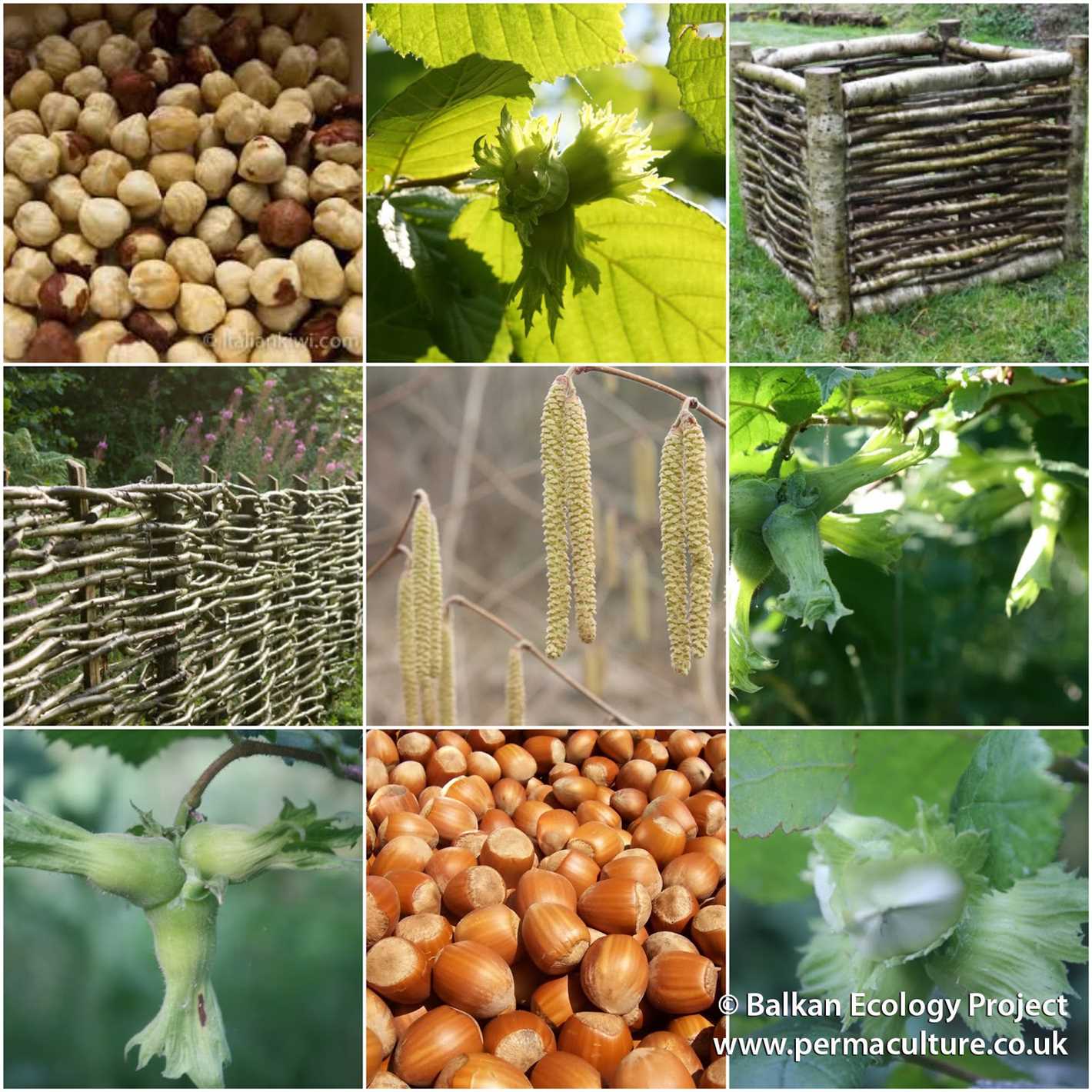

One of the primary benefits of pruning hazelnut trees is that it promotes better air circulation. By removing excessive branches and foliage, pruning allows more air to flow through the tree, reducing the risk of fungal diseases. Improved air circulation also helps in pollination by facilitating the movement of pollen.
Controls Tree Size
Pruning plays a crucial role in controlling the size of hazelnut trees. By selectively removing branches, you can prevent the tree from becoming too large and difficult to manage. Controlling the size also makes it easier to harvest the nuts and maintain the overall health of the tree.
Shapes the Tree
Pruning is a vital tool for shaping hazelnut trees. It allows you to train the tree to develop a desired form, which can make harvesting and maintenance tasks more manageable. By removing competing or crossing branches, pruning ensures that the tree grows in a balanced and symmetrical manner.
Stimulates Fruit Production
Regular pruning stimulates fruit production in hazelnut trees. By removing old and non-productive wood, pruning encourages the growth of new branches that will bear fruit. It also helps in directing the tree’s energy towards fruit production by reducing the number of potential competing branches.
Rejuvenates the Tree
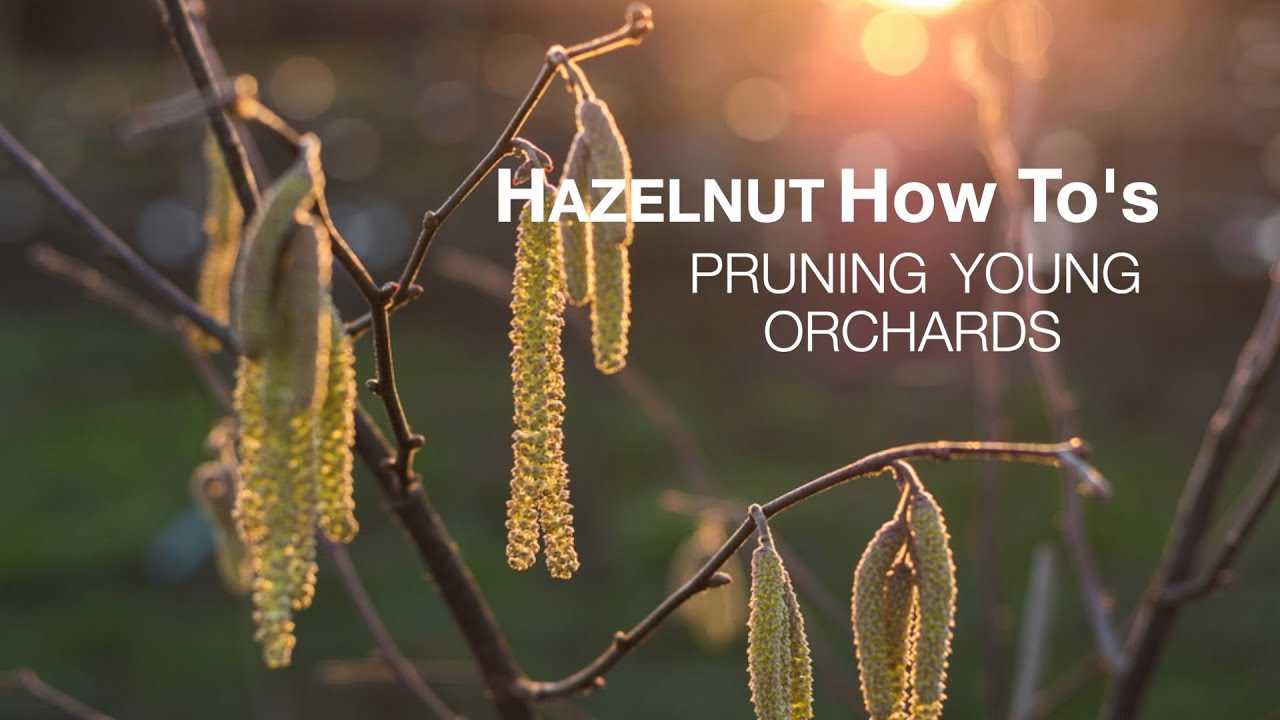

Pruning hazelnut trees can help rejuvenate older or neglected trees. By selectively removing dead or diseased branches, pruning promotes the growth of new, healthy wood. This process rejuvenates the tree and improves its overall productivity.
Improves Nut Quality
Pruning hazelnut trees can also lead to improved nut quality. By allowing more sunlight to reach the branches, pruning enhances the color, flavor, and nutritional value of the nuts. It also helps in reducing the risk of pest and disease infestations, which can negatively impact the quality of the nuts.
In conclusion, pruning hazelnut trees is a critical practice for maximizing their health and fruit production. By promoting air circulation, controlling tree size, shaping the tree, stimulating fruit production, rejuvenating the tree, and improving nut quality, pruning plays a vital role in maintaining the overall vitality and productivity of hazelnut trees.
Pruning Hazelnut Trees: Key Benefits
Pruning hazelnut trees is an essential practice for maintaining their health and promoting abundant fruit production. Here are some key benefits of regular pruning:
- Promotes Air Circulation: Pruning helps create a well-ventilated canopy, allowing air to circulate freely through the branches. This helps prevent the growth of fungal diseases, such as powdery mildew and botrytis.
- Controls Tree Size: Hazelnut trees have a natural tendency to grow vigorously and can become quite large if left unpruned. Regular pruning helps control their size, making it easier to manage and harvest the fruits.
- Increases Sunlight Exposure: Pruning removes excessive branches and opens up the canopy, which allows more sunlight to reach the inner parts of the tree. Increased sunlight exposure enhances fruit production and can improve the overall quality of the nuts.
- Shapes the Tree: Pruning helps shape the hazelnut tree, giving it a more desirable and uniform appearance. It allows you to remove any dead, damaged, or crossing branches, which can reduce the risk of branch breakage and enhance the tree’s aesthetics.
- Stimulates New Growth: Pruning stimulates the growth of new branches and buds, which can result in higher fruit production. Removing older branches that are no longer productive redirects the tree’s energy to younger, more productive parts.
By understanding the key benefits of pruning hazelnut trees, you can effectively manage their growth, maintain their health, and ensure abundant fruit production.
When to Prune Hazelnut Trees
Pruning hazelnut trees is an important part of their overall care and maintenance. By pruning the trees at the right time, you can help shape them for optimal fruit production and keep them healthy and vigorous. So, when is the best time to prune hazelnut trees?
Pruning in Late Winter or Early Spring
It is generally recommended to prune hazelnut trees in late winter or early spring before new growth begins. This is because hazelnut trees are dormant during this time, which means that they are not actively growing. Pruning during this period allows the tree to focus its energy on healing and recovering from the pruning cuts.
By pruning in late winter or early spring, you can also get a better view of the tree’s structure, as the leaves have fallen, making it easier to identify and remove any damaged, diseased, or crossing branches.
Avoid Pruning during Late Summer or Fall
It’s important to avoid pruning hazelnut trees during late summer or fall. Pruning during this period can stimulate new growth, which may not have enough time to harden off before the onset of winter. This can lead to frost damage and reduce the tree’s overall winter hardiness.
Pruning hazelnut trees in late summer or fall can also leave fresh pruning cuts exposed during the wet and cold winter months, increasing the risk of disease infections. It’s best to wait until the following late winter or early spring to prune these trees.
Observing Individual Tree’s Growth
While late winter or early spring is the general timeframe for pruning hazelnut trees, it’s important to also observe the individual tree’s growth habits and health. If you notice any dead or damaged branches, it’s a good idea to remove them as soon as possible, regardless of the season.
If a hazelnut tree has become overgrown or misshapen, it may benefit from more extensive pruning, even if it’s not during the recommended late winter or early spring period. However, it’s best to consult with a local arborist or horticulturist for specific advice on how and when to prune your hazelnut tree to ensure its continued health and productivity.
Tools and Techniques for Pruning Hazelnut Trees
Pruning hazelnut trees is an important task that helps maintain tree health, shape the bush, and promote abundant fruit production. To effectively prune hazelnut trees, you will need a few basic tools and knowledge of proper pruning techniques.
Tools for Pruning Hazelnut Trees
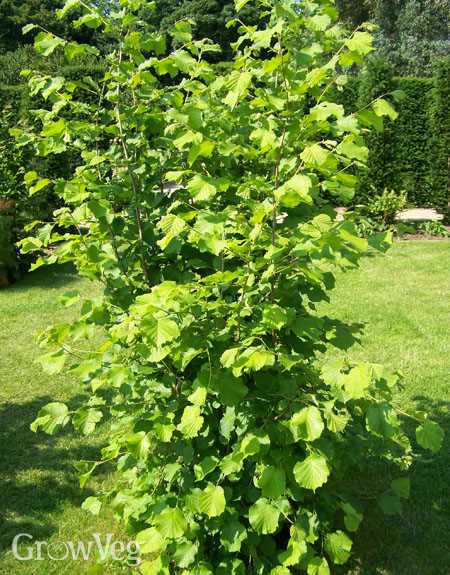

- Hand pruners: Hand pruners are essential for making clean cuts on small branches and stems. Look for pruners with a sharp blade and a comfortable grip.
- Loppers: Loppers are useful for pruning larger branches that are too thick for hand pruners. They have long handles that provide extra leverage for cutting through thick wood.
- Pruning saw: A pruning saw is necessary for cutting thick branches that cannot be pruned with hand pruners or loppers. Choose a saw with a sharp blade and a comfortable handle.
- Gloves: Wearing gloves while pruning can protect your hands from potential injuries and help you get a better grip on tools.
- Ladder or pruning pole: Depending on the size of your hazelnut tree, you may need a ladder or a pruning pole to reach higher branches for pruning.
Pruning Techniques for Hazelnut Trees
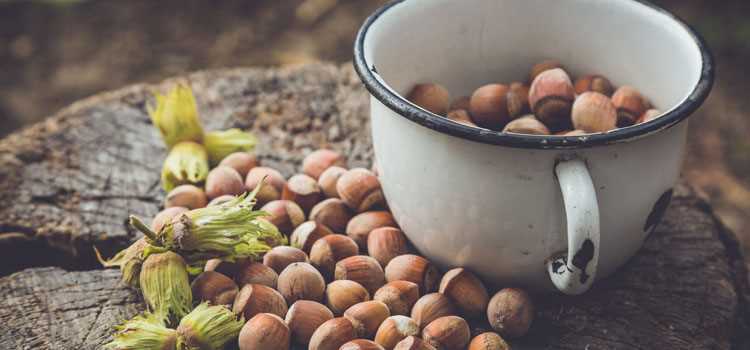

When pruning hazelnut trees, it is important to follow these techniques:
- Remove dead or damaged branches: Start by removing any dead or damaged branches. These branches can hinder the tree’s growth and increase the risk of disease.
- Thin out crowded branches: Look for branches that are crossing or rubbing against each other. Remove these branches to improve airflow and prevent the spread of diseases.
- Prune for shape and size control: Prune the hazelnut tree to maintain a desirable shape and size. This helps the tree receive adequate sunlight and promotes better fruit production.
- Prune after fruiting: For hazelnut trees, it is best to prune after the fruiting season. This allows you to assess the tree’s performance and remove any unproductive branches.
- Make clean cuts: When pruning hazelnut trees, make clean cuts just above the branch collar. Avoid leaving stubs or making cuts too close to the collar, as this can hinder the tree’s healing process.
By using the right tools and following proper pruning techniques, you can effectively maintain your hazelnut trees, ensuring their health and abundant fruit production.
Step-by-Step Guide to Pruning Hazelnut Trees
1. Choose the right time for pruning
Pruning hazelnut trees is best done in late winter or early spring, before new growth begins. This allows the tree to heal and recover quickly from the pruning cuts.
2. Gather the necessary tools
Before you start pruning, make sure you have the right tools. You will need a pair of sharp pruning shears or loppers, hand pruners for smaller branches, and a pruning saw for larger branches.
3. Remove any dead or diseased branches
Begin by cutting off any dead or diseased branches. These branches will not produce fruit and can spread diseases to the rest of the tree. Make clean cuts just outside the branch collar, where the branch meets the trunk.
4. Thin out crowded branches
Hazelnut trees can become dense with branches, which can limit light penetration and airflow, leading to disease and reduced fruit production. Thin out crowded branches by cutting them back to a lateral branch or to the main trunk. Aim for an open and balanced canopy.
5. Shape the tree
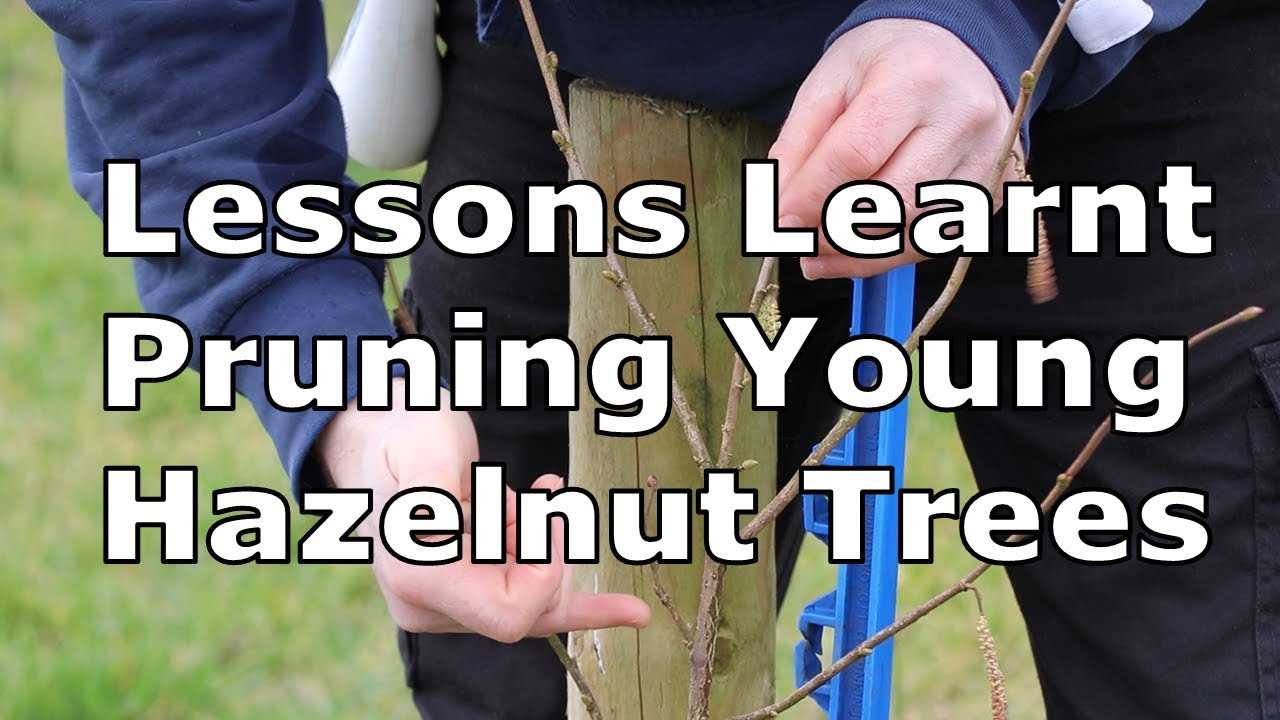

To shape the hazelnut tree, prune the branches to encourage upward growth and an open, spreading habit. Remove any branches that are crossing or rubbing against each other.
6. Prune for fruit production
To encourage abundant fruit production, focus on pruning branches that are more than three years old. These older branches tend to produce fewer nuts. Cut them back to younger, more vigorous branches.
7. Clean up and dispose of pruned branches
Once you have finished pruning, make sure to clean up and dispose of the pruned branches properly. This will help prevent the spread of diseases and pests.
8. Monitor and maintain the tree
After pruning, regularly monitor and maintain the tree. Remove any new sucker growth from the base of the tree, as well as any additional dead or diseased branches.
9. Consider professional assistance
If you are unsure about how to prune your hazelnut tree or if you have a large tree that requires significant pruning, consider seeking professional assistance. They can provide guidance and ensure that the pruning is done correctly.
10. Practice regular pruning
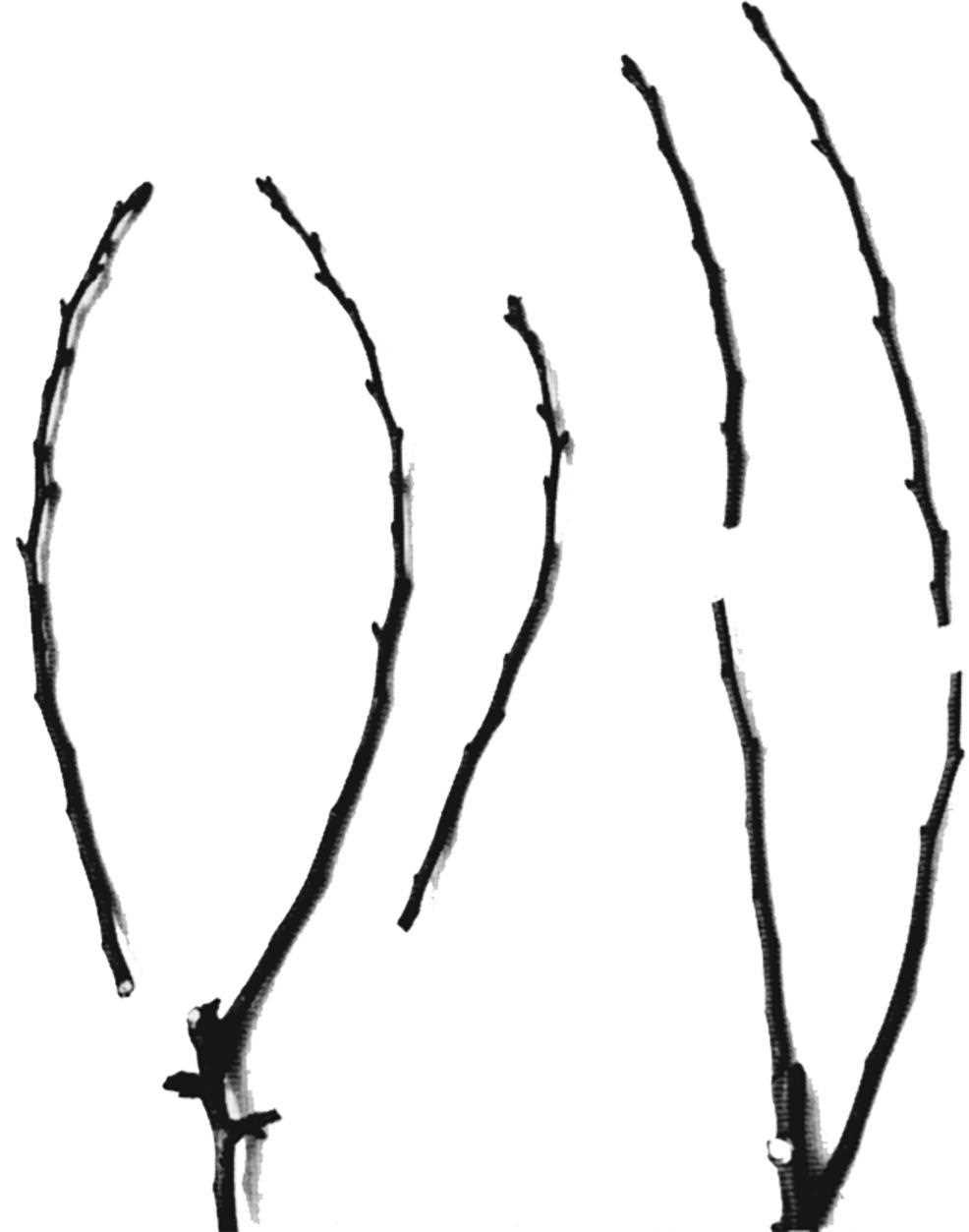

Regular pruning is essential for maintaining the health and productivity of hazelnut trees. Aim to prune your trees every 2-3 years to keep them in optimal condition.
Common Mistakes to Avoid When Pruning Hazelnut Trees
- Pruning at the wrong time: One common mistake is pruning hazelnut trees at the wrong time of year. Hazelnut trees should be pruned in late winter or early spring, before the buds start to break. Pruning at the wrong time can lead to poor fruit production and potential damage to the tree.
- Over-pruning: Another mistake to avoid is over-pruning the hazelnut tree. While pruning is necessary for shaping the tree and promoting fruit production, excessive pruning can weaken the tree and reduce overall fruit yield. It’s important to follow proper pruning techniques and avoid removing too many branches or too much foliage.
- Pruning too much of the previous year’s growth: Hazelnut trees produce nuts on the previous year’s growth, so it’s important not to prune off too much of this growth. Pruning too much of the previous year’s growth can result in reduced nut production. It’s best to selectively prune only the branches that need shaping or removal.
- Not properly disinfecting pruning tools: When pruning hazelnut trees, it’s essential to use clean and disinfected pruning tools to prevent the spread of diseases. Not properly disinfecting pruning tools can lead to the transmission of pathogens from one tree to another. It’s recommended to clean pruning tools with a solution of bleach or rubbing alcohol before and after each use.
- Ignoring the tree’s natural shape: Hazelnut trees have a natural growth habit that should be considered when pruning. Ignoring the tree’s natural shape and pruning it into an unnatural form can hinder its overall growth and fruiting potential. It’s important to understand the tree’s growth pattern and prune in a way that maintains its natural form while removing any damaged or crossing branches.
- Not being mindful of sun exposure: Hazelnut trees require adequate sunlight for optimum fruit production. When pruning, it’s important to ensure that the tree’s branches are not too dense, blocking sunlight from reaching the lower parts of the tree. Pruning should be done to allow enough sunlight to penetrate the tree and reach all parts of the canopy.
Avoiding these common mistakes when pruning hazelnut trees will help promote healthy growth, abundant fruit production, and overall tree vigor.
Frequently Asked Questions about Pruning Hazelnut Trees
1. When is the best time to prune hazelnut trees?
It is best to prune hazelnut trees in late winter or early spring, before new growth begins. Pruning during this time allows the tree to heal quickly and reduces the risk of disease or pests infesting the wounds.
2. How often should hazelnut trees be pruned?
Hazelnut trees should be pruned annually to maintain their shape and promote optimal fruit production. Regular pruning helps to remove old, damaged, or diseased branches and encourages the growth of new, productive shoots.
3. What tools do I need to prune hazelnut trees?
To prune hazelnut trees, you will need a pair of sharp pruning shears or loppers to remove smaller branches, as well as a pruning saw for larger branches. It is also helpful to have a sturdy ladder or pruning pole to access higher branches.
4. How much should I prune my hazelnut trees?
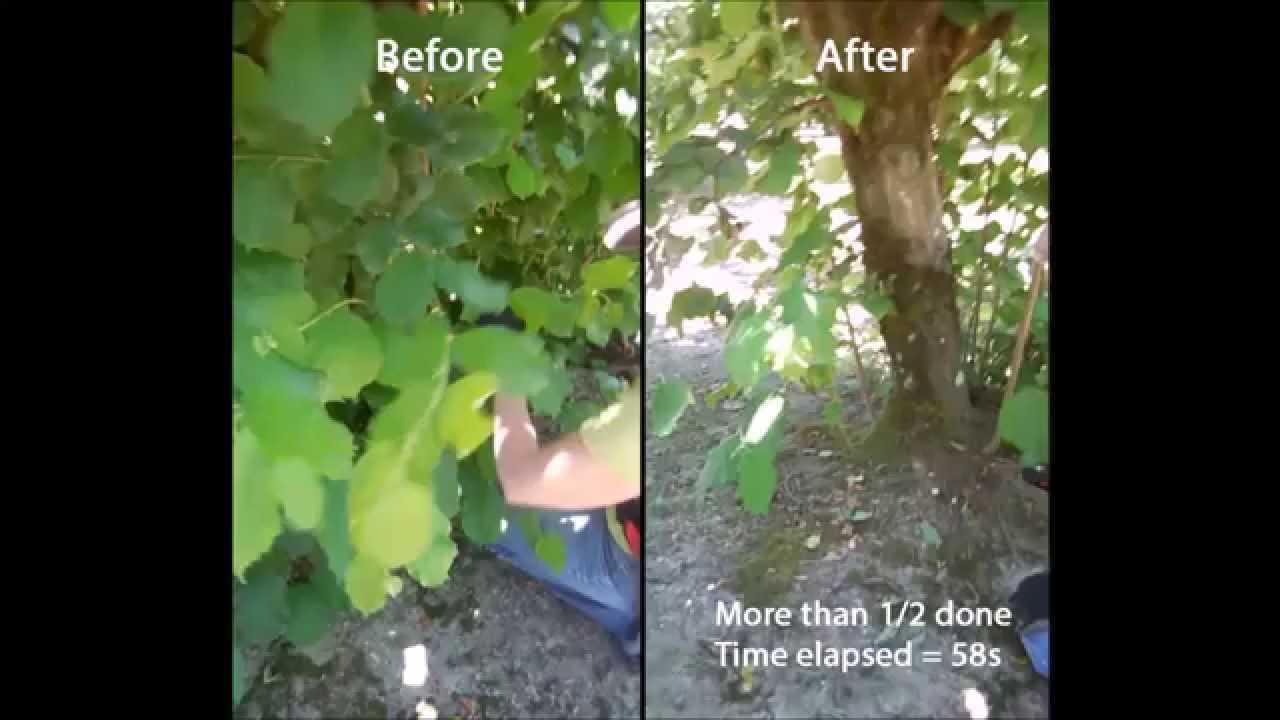

When pruning hazelnut trees, aim to remove about 20-30% of the tree’s canopy each year. This helps to maintain a balanced shape and encourages new growth and fruit production. Avoid excessive pruning, as it can stress the tree and reduce future fruit yields.
5. Can I prune hazelnut trees in summer?
It is generally not recommended to prune hazelnut trees in summer. Pruning during this time can stimulate new growth that is more susceptible to damage from hot temperatures and pests. Stick to pruning in late winter or early spring for best results.
6. How should I dispose of pruned branches?
It is important to dispose of pruned branches properly to prevent the spread of diseases and pests. If the pruned branches are healthy, they can be used as mulch or composted. If they are diseased or infested, it is best to burn them or dispose of them in sealed bags.
Question-answer:
When is the best time to prune hazelnut trees?
The best time to prune hazelnut trees is during the dormant season, which is typically in late winter or early spring before new growth begins.
How much should I prune off the hazelnut tree?
The amount of pruning depends on the age and size of the tree. For young trees, it is recommended to remove about one-third of the previous year’s growth. For older trees, it is recommended to remove dead, damaged, or overcrowded branches.
What tools should I use for pruning hazelnut trees?
For pruning hazelnut trees, you will need a pair of sharp bypass pruning shears for small branches and a pruning saw for larger branches. It is important to use clean and sharp tools to make clean cuts and prevent the spread of disease.
How often should hazelnut trees be pruned?
Hazelnut trees should be pruned regularly to maintain their shape and promote fruit production. It is recommended to prune them every 2-3 years during the dormant season.
Can I prune hazelnut trees during the summer?
It is not ideal to prune hazelnut trees during the summer as it can stress the tree and interfere with its growth. Pruning during the dormant season is generally preferred to avoid damaging the tree and to promote healthy growth.







